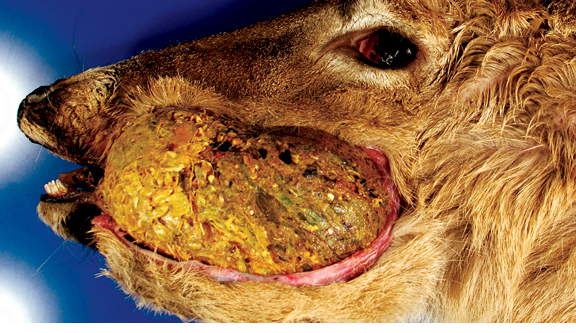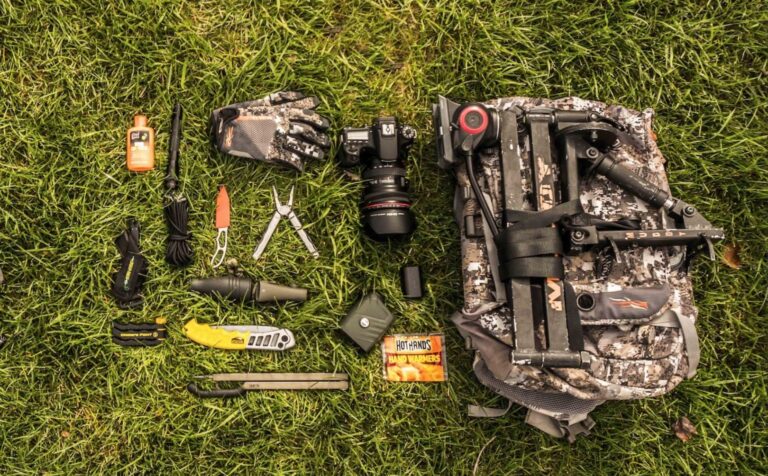What is the Average Weight of a Whitetail Deer: Comprehensive Guide
The average weight of a whitetail deer varies by region and gender. Bucks typically weigh more than does.
Whitetail deer are one of the most common deer species in North America. Their weight can differ greatly based on several factors like age, diet, and environment. Generally, adult bucks weigh between 150 to 300 pounds, while does usually weigh between 90 to 200 pounds.
Understanding the average weight of a whitetail deer can be important for hunters, wildlife enthusiasts, and researchers. It helps in managing populations and ensuring the health of the species. We will delve deeper into the factors affecting their weight and provide detailed insights into the average weight of whitetail deer across different regions.
Introduction To Whitetail Deer
The whitetail deer is one of the most common and recognizable animals in North America. Known for its distinctive tail, which flashes white when it runs, this deer is a favorite among hunters and wildlife enthusiasts alike. Understanding its average weight can provide insights into its health and habitat.
Species Overview
The whitetail deer, scientifically known as Odocoileus virginianus, belongs to the deer family, Cervidae. Males are called bucks, females are does, and the young are known as fawns. Bucks are larger than does, which affects their average weight.
| Type | Weight Range (lbs) |
|---|---|
| Bucks | 130 – 300 |
| Does | 90 – 200 |
Habitat And Distribution
Whitetail deer are highly adaptable animals. They thrive in a variety of habitats, including forests, grasslands, and even urban areas. They are distributed across North America, from Canada to the southern United States.
- Forests: Provide cover and food.
- Grasslands: Offer open space and grazing opportunities.
- Urban Areas: Adapt to human presence and find food in gardens.
Their ability to adapt to diverse environments helps them maintain stable populations. This adaptability also influences their physical characteristics, including average weight.
Factors Influencing Weight
Understanding the average weight of a whitetail deer involves various factors. These factors play a crucial role in determining the weight of these majestic creatures. Let’s explore the key elements that influence the weight of a whitetail deer.
Age And Gender
Age significantly impacts a whitetail deer’s weight. Fawns, or young deer, usually weigh between 4 to 8 pounds at birth. As they grow, their weight increases rapidly. By the time they reach six months, they can weigh around 60 to 80 pounds.
The gender of a deer also affects its weight. Adult bucks, or male deer, typically weigh more than does, or female deer. An adult buck can weigh between 130 to 300 pounds. An adult doe usually weighs between 90 to 200 pounds. Bucks generally have larger bodies and more muscle mass, contributing to their higher weight.
Seasonal Variations
Seasonal changes impact a deer’s weight. During spring and summer, deer have access to abundant food. This period allows them to gain weight and build fat reserves.
In contrast, during fall and winter, food becomes scarce. Deer may lose some weight during these months. They rely on their fat reserves to survive harsh conditions. The weight of a whitetail deer can fluctuate based on the season and food availability.
Regional Weight Differences
Understanding the average weight of a whitetail deer involves considering regional differences. These differences are influenced by various factors, including climate and terrain. Let’s dive into how these factors play a role.
Northern Vs. Southern Deer
Northern whitetail deer tend to be larger than their southern counterparts. A mature buck in the northern regions can weigh between 150 to 300 pounds. In contrast, a mature buck in the southern regions usually weighs between 100 to 175 pounds.
The primary reason for this size difference lies in the availability of food and the need to store fat for harsh winters. Northern deer must survive colder climates, which requires more body mass.
Impact Of Climate And Terrain
Climate and terrain significantly affect deer weight. Northern regions experience harsher winters, demanding deer to accumulate more fat. This results in heavier deer. The terrain also plays a role; areas with dense forests provide more food and cover, contributing to larger sizes.
In southern regions, the milder climate means deer do not need to store as much fat. Consequently, they are generally lighter. The open terrain in these areas also means they spend more energy moving around, impacting their overall weight.
| Region | Average Weight (Bucks) | Average Weight (Does) |
|---|---|---|
| Northern | 150-300 lbs | 90-200 lbs |
| Southern | 100-175 lbs | 80-120 lbs |
Weight By Life Stage
Understanding the average weight of a whitetail deer at different life stages can offer valuable insights. These insights can be useful for wildlife enthusiasts, hunters, and researchers. The weight of a whitetail deer varies significantly as it progresses from a fawn to an adult. Let’s break down the average weight by life stage.
Fawns
Fawns are the youngest deer, typically under a year old. At birth, a fawn usually weighs between 4 to 8 pounds. By the time they reach six months, their weight increases. They can weigh anywhere from 40 to 70 pounds depending on their diet and environment.
Yearlings
Yearlings are deer that are around one year old. These young deer experience significant growth. A healthy yearling can weigh between 70 to 130 pounds. Their diet becomes more varied, which helps them gain this weight. Yearlings are still developing but are much stronger and more resilient than fawns.
Adults
Adult whitetail deer are those that are two years and older. The weight of adult whitetail deer varies by sex. Adult does (females) typically weigh between 90 to 200 pounds. Bucks (males) are heavier, weighing between 150 to 300 pounds. This weight difference is due to their muscle mass and antler growth.
Diet And Nutrition
The average weight of a whitetail deer varies by region and gender. Adult males, or bucks, typically weigh between 150-300 pounds. Female whitetails, or does, usually weigh between 90-200 pounds.
Understanding the diet and nutrition of whitetail deer is crucial. Their weight depends largely on what they eat. Whitetail deer have adapted to various food sources in their habitats. They need a balanced diet to stay healthy and maintain their average weight.Natural Food Sources
Whitetail deer mainly eat plants. Their diet includes leaves, twigs, fruits, and nuts. They also consume grass and crops like corn and soybeans. Their food choices change with the seasons. In spring and summer, they prefer green vegetation. During fall, they eat acorns and nuts. Winter forces them to eat woody plants and shrubs.Supplemental Feeding
Some people provide extra food for deer. This is called supplemental feeding. It happens especially in winter when natural food is scarce. Farmers use corn, soybeans, and specially formulated deer pellets. These foods help deer survive harsh conditions. But too much supplemental feeding can be harmful. It may cause health issues and change natural behaviors. So, it should be done carefully and responsibly. “`
Credit: bestdeerhuntohio.com
Measuring Deer Weight
Accurately measuring a whitetail deer’s weight can be challenging. Hunters and researchers use different methods to estimate a deer’s weight. Two common measurements are field dressing weight and live weight estimation.
Field Dressing Weight
The field dressing weight refers to the weight of the deer after its internal organs are removed. This process is also called “gutting” the deer. Field dressing is essential for meat preservation and quality.
Typically, the field dressing weight is about 75-80% of the deer’s live weight. For instance, if a deer’s field dressing weight is 120 pounds, its live weight might be around 150-160 pounds.
Field dressing weights vary by region and deer’s age. Adult bucks usually weigh more than does. The table below shows average field dressing weights for different age groups.
| Deer Age | Average Field Dressing Weight (lbs) |
|---|---|
| Fawn | 40-60 |
| Yearling | 70-110 |
| Adult Doe | 90-130 |
| Adult Buck | 130-180 |
Live Weight Estimation
Estimating the live weight of a whitetail deer involves using the field dressing weight. Multiply the field dressing weight by a factor. The factor typically ranges from 1.25 to 1.33.
For example, if a deer’s field dressing weight is 100 pounds:
- Using a factor of 1.25, the live weight is 125 pounds.
- Using a factor of 1.33, the live weight is 133 pounds.
It helps to use both factors to get a range. This range provides a more accurate estimate of the deer’s live weight.
Another method is using a live weight chart. Hunters can look up the field dressing weight and find the corresponding live weight. These charts are handy and save time in the field.
Knowing the live weight is useful for understanding the deer’s health and age. It also helps in planning the transport and processing of the deer.
Impact Of Hunting On Weight
Hunting influences the average weight of whitetail deer in various ways. It affects both the health of the deer population and the size of individual deer. Hunters and wildlife managers use different strategies to achieve balance.
Selective Harvesting
Selective harvesting plays a key role in managing deer weight. Hunters often target older, larger bucks. This practice allows younger deer to grow and gain weight. By removing only a portion of the population, selective harvesting helps maintain healthy deer herds.
This method ensures that the deer population remains balanced. It also encourages genetic diversity, which contributes to the overall health of the herd.
Population Management
Population management is crucial for maintaining the weight of whitetail deer. Overpopulation can lead to competition for food. This results in lower body weights. Wildlife managers use hunting as a tool to control deer numbers.
By keeping the population in check, deer have better access to food. This leads to healthier and heavier deer. Proper population management helps maintain the ecosystem balance. It ensures that deer have the resources they need to thrive.

Credit: hartlanddeer.com
Conservation And Management
Conserving the whitetail deer population is vital. Proper management ensures their survival and balance in the ecosystem. Efforts focus on maintaining healthy deer populations. This involves habitat management, population control, and disease prevention.
Wildlife Management Practices
Effective wildlife management practices are essential for maintaining a balanced deer population. These practices include:
- Setting hunting seasons to control the deer population.
- Implementing habitat improvement projects.
- Monitoring deer health and population numbers.
Hunters play a significant role in population control. Controlled hunting helps prevent overpopulation. Overpopulation can lead to habitat destruction and food shortages.
Habitat improvement projects also make a difference. These projects include planting food plots and managing forests. Such efforts provide better food sources and shelter for deer.
Role Of Biologists
Biologists are crucial in deer conservation. They study deer behavior, health, and habitat needs. Their research informs management practices.
| Task | Description |
|---|---|
| Population Monitoring | Tracking deer numbers and health. |
| Research | Studying deer behavior and habitat. |
| Management Plans | Creating strategies for sustainable populations. |
Biologists also educate the public. They provide information on proper wildlife management. This education helps people understand the importance of conservation.
Through their efforts, biologists ensure a healthy and sustainable deer population. Their work supports the overall balance of the ecosystem.

Credit: deerlab.com
Frequently Asked Questions
What Is The Average Weight Of A Whitetail Deer?
The average weight of a whitetail deer varies. Adult males (bucks) typically weigh between 150-300 pounds. Adult females (does) usually weigh between 90-200 pounds.
How Much Does A Whitetail Doe Weigh?
A whitetail doe typically weighs between 90 and 200 pounds. Their weight can vary based on age and region.
Do Whitetail Deer Weights Vary By Region?
Yes, whitetail deer weights vary by region. Northern deer are generally heavier than southern deer due to climate differences.
How Much Does A Whitetail Fawn Weigh?
A whitetail fawn weighs between 4 and 8 pounds at birth. They grow rapidly, gaining weight quickly within the first few months.
Conclusion
Understanding the average weight of a whitetail deer helps hunters and wildlife enthusiasts. Generally, bucks weigh between 150-300 pounds. Does typically weigh between 90-200 pounds. These figures can change based on age, diet, and region. Knowing this information aids in better wildlife management.
It also enhances hunting strategies and conservation efforts. Keep this knowledge handy for your next outdoor adventure. It makes observing and appreciating these majestic creatures even more rewarding.





